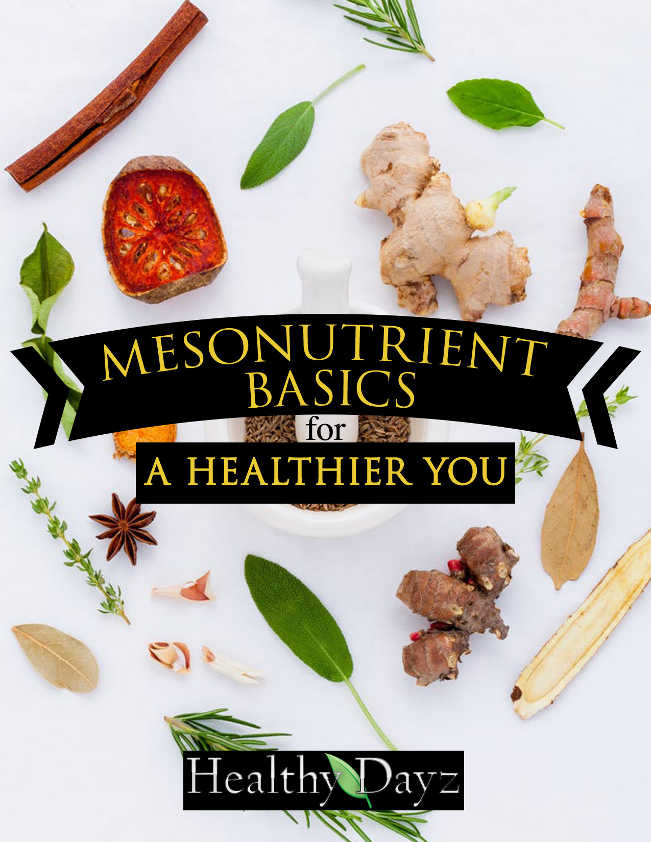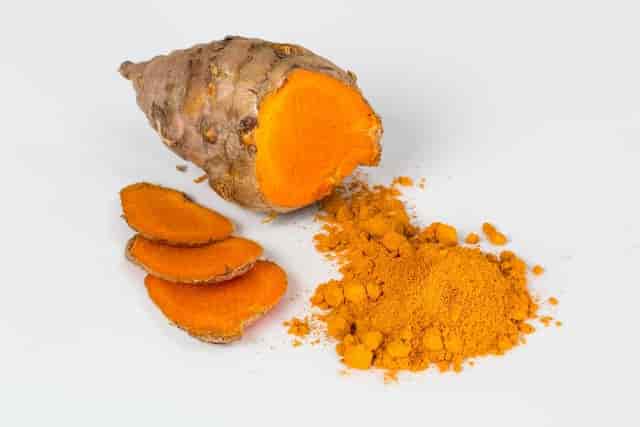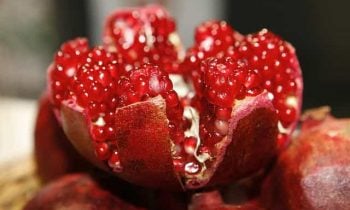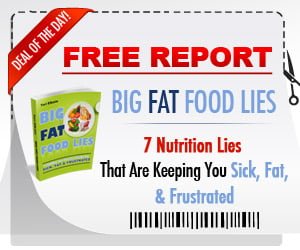Super foods have power and they’re called mesonutrients
If you haven’t heard of mesonutrients, don’t worry, it’s a relatively new term to the general public. Many health publications and websites are proclaiming it as the newest health trend of 2019. Want to know why? Let’s check it out.
Most of us have heard of super foods, but have you ever wondered why they are called super foods? These are nutrient dense foods that come straight out of the sea and the earth. Super foods are filled with minerals and vitamins, antioxidants, and essential fatty acids. It is these super foods that reduce your risk of cardiovascular disease and all the other chronic ailments. When you eat super foods you regulate your metabolism, you keep your weight healthy, reduce inflammation and improve brain function – basically, you achieve overall wellness.
2019 is the year we get to the source of superfoods – mesonutrients
Mesonutrients are the nutrients found inside the super foods that make them so super. We all should be eating more plant-based foods and more foods that are highly nutrient-dense. Some of them we have heard of many times before; like green tea, turmeric, tomatoes, and pomegranates. In order to benefit from the mesonutrients, you might have to consume a lot of super foods each day.

Just for example, it is recommended that we eat 400 mg of turmeric a day. In order to get your 400 mg of curcumin each day, you would need to eat 220 pounds of turmeric powder a day. How impossible is that! In saying that, it is not to say that when you do eat less, you are not going to still obtain good benefits from consuming less. People take curcumin, but they don’t benefit from eating the entire root. The trend we are seeing for 2019 is direct access to the power of mesonutrients; the source, and it could be in the form of powder or capsuled concentrates.
Food as preventative medicine is making huge waves
We also know that today curative medicine is still the frontrunner method of western medicine but preventative medicines like diet and nutrition are scoring big time in the wellness world in this day and age. After all, what you put in is what you get out, right? By being able to access mesonutrients, we are getting really close to preventing heaps of diseases that are facing our modern world and modern way of eating.
Basically what is happening for 2019; is that you can for instance skip buying the super foods as you did before. Because in its place will be the source that is now available to you, the mesonutrients, that actually makes up the super food!
Whole turmeric as a mesonutrient
- Getting back to turmeric, for example, it has plenty of health benefits, not least being its anti-inflammatory benefits and help for other unwanted health conditions such as high blood pressure and high blood sugar. It is also excellent for assisting with arthritis problems and high cholesterol.
- Low doses of turmeric, even, can benefit people who don’t have any of the above-diagnosed conditions.
- There is no doubt that turmeric is considered a superfood. Turn to Google and see how it is known as ‘golden milk’ or ‘moon milk’ because of its noted health assistance.
- But even despite all the health benefits of turmeric, you can now get even higher and more concentrated doses of curcumin in turmeric. Curcumin is the active ingredient, the mesonutrient in turmeric that is actually responsible for those fantastic anti-inflammatory benefits, whether in supplement or powdered form. Instead of drinking up sweetened turmeric lattes, now you can get right to the source, in the form of the mesonutrients.
But it’s not only curcumin. There is Lycopene which is the active ingredient in tomatoes and watermelon for instance. Sure, you can drink tomato juice and get your lycopene in, but now you can go to a health store and buy the lycopene itself in supplement form or powder from, maybe even in syrups.
Another mesonutrient for instance is ECGC; what you find in green tea. With mesonutrients, bottom line, you are now tapping right into the superfood’s actual active compounds to achieve the maximum health gains.
The buzz about mesonutrients

There is a real buzz around the world when it comes to mesonutrients. The world sure does keep hanging on to the latest trends with bated breath, because if there is something to be found that is going to improve our health and our bodies – well, we are going to jump onto the bandwagon! If you are a person who follows the latest health trends, and you try and do everything you can to take care of your body, then you will be highly interested in mesonutrients. Not micronutrients and not macronutrients.
These are mesonutrients, responsible for positive, very positive health benefits in your body. We all know that eating blue berries, tomatoes, and drinking green tea is good for us, but what is in the inside that makes them so good for us? Inside each of these fantastic super foods are powerful natural active compounds that make the super foods super!
Let’s list the foods that are rich with mesonutrients beside curcumin which we have already discussed
1. EGCG (Epigallocatechin Gallate)

- Epigallocatechin gallate or EGCG is a mesonutrient, recognized to have beneficial effects on cardiovascular health.
- Where on earth do you find ECCG in foods? EGCG is a type of plant-based compound called catechins. Eating catechins which are high in antioxidants helps to limit free radical damage in the body. That’s why green tea and some of the other Camellia sinensis teas are so healthy for us – it’s because they have catechins in them. These are particularly potent in fighting the free radicals which are believed to cause cell degeneration and disease.
- If you don’t drink green tea, then you can get your catechins in quite a few other plant-based foods.
- Biochemists classify catechins as flavanols, plant pigments that have medicinal properties. You might have heard of flavonoids before and flavanols are just a subfamily of flavonoids.
- According to the University of Maryland Medical Center, green tea contains the full complement of catechins; read about the full complement here; and these include EGCG, which is the most active polyphenol in green tea.
- Which illness do you have? High cholesterol? Some cancers, liver disease, inflammatory bowel disease, diabetes? Green tea is noted to treat all these ills. But look, we said we would add in foods here to enjoy if you don’t want to drink tea: These are:

-
- Apples. Apples are a rich source of phyto (plant-based) chemicals, including catechins. Apples are linked to inhibiting cancer cell growth, reducing low-density lipoprotein (LDL) cholesterol (which is the bad kind), as well as lowering your risk of diabetes.
- Blackberries, cherries, guavas, pears are other fruits. Red wine, dark chocolate, and fava beans, too, have plenty of catechins in them.
- You will hear more and more foods with active ingredients that make them very special – watch out for black sesame and spirulina too.
It is true that green tea delivers the greatest range of catechins in a serving, but cocoa products also contain quite a modest amount of these antioxidant-rich polyphenols. And we know that polyphenols are super nutrients that we get through certain plant-based foods, packed with antioxidants and health benefits.

100 grams of cocoa supposedly contains 26.2 milligrams of epicatechin 12 milligrams of catechins and 41.5 milligrams of epicatechin. Remember this is the dark cocoa chocolate and not the heavily sugared milk chocolate. The healing powers of raw cocoa are amazing:
- It contains magnificent magnesium, increasing the vigor of the heart muscle.
- Amazing antioxidants; in fact the highest antioxidant superfood known to man.
- Anti-anxious antidepressant because it is associated with feelings of wellbeing.
- Sexy slimming benefits because it diminishes the appetite.
3. Anthocyanins
- Anthocyanins are types of flavonoids; compounds with antioxidant effects. Anthocyanins are the pigments that you see in plants of red, blue and purple colors. Also known for fighting free radicals, anthocyanins offer anti-inflammatory, anti-cancer and anti-viral benefits. Find these healing qualities in red onions, berries, kidney beans, grapes, wine from grapes, tomatoes, pomegranates, acai, chokeberry, bilberry, elderberry and cherries, and red cabbage
- Diseases such as heart disease, obesity, cancer all benefit from the use of anthocyanins for health.
- When you get your fill of anthocyanin-rich fruits and vegetables you help to boost your overall health. The human body is under constant attack from oxidative stress. So antioxidants such as anthocyanins play a huge role in supporting defense mechanisms against free radicals.
- Plants naturally produce anthocyanins to protect themselves against environmental factors, such as temperature changes and changes in light. Research shows that anthocyanins have been shown to have anticarcinogenic activity, acting as antioxidants which induce cancer cell death. This phenomenon has been demonstrated in both animal and human studies.
4. Lycopene, another mesonutrient

The main source of lycopene is to be found in tomatoes and tomato-based products. Like Anthocyanins above, which give fruit and vegetables their red to purple colors, so does lycopene give fruit and vegetables their orange to red colors. These fruits and veggies are called carotenoids.
You will find Lycopene in watermelons, tomatoes, red oranges, apricots, pink grapefruit, rosehips, and guavas. A cup of about 240 mL of tomato juice will give you around 20 mg. of lycopene. Lycopene found in supplements is about as easy for your body to use as the lycopene that is found in food. If you want to help with lowering your blood pressure and high cholesterol or helping your heart disease or cancer, lycopene can assist – this is even without sufficient scientific evidence to support all these uses.
There is a lot of research interest, though, in lycopene’s role in preventing cancer and recent studies are researching whether there are any links to taking in lycopene and reducing the risk of prostate cancer in men. That will be great news!
5. Safranal

Saffron is the most expensive spice in the world – did you know that just 1 pound or 450 grams of saffron can set you back between 500-5,000 U.S. dollars? It’s because the harvesting methods are so intensive which makes production so costly. It’s harvested by hand, from the Crocus sativus flower. It’s an ancient flower, originating from Greece, and revered for its medicinal properties. IN those days, people would eat saffron to boost their mood and their libido, as well as their memory.
Today it is known for being a powerful antioxidant, to treat depressive symptoms – in fact some people have been known to call it the “sunshine spice” and not due to its bright color, which in any case is enough to brighten anyone’s mood! It has been touted as cancer-fighters, being so high in antioxidants which help to neutralize the harmful effects of free radicals. In certain studies, saffron compounds are known to kill off colon cancer cells, suppressing their growth. But still, more human research is required.
Saffron is also known to reduce PMS symptoms, to act as an aphrodisiac, to reduce appetite and help in weight loss. As a powerful mesonutrient, it has been heard to say that it could improve the memory of those with Alzheimer’s disease and that is something worth bragging about! However, as we mentioned above, more studies are still required to draw stronger conclusions. Even though it is a superfood that is super expensive, fortunately, a small amount goes a long way.
6. Berberine
- Berberine is a chemical which is found in several plants such as European barberry, goldenseal, Oregon grape, goldthread, Phellodendron, and tree turmeric.
- Berberine is particularly noted to be effective for heart failure. Others say that it is excellent for treating burns on the skin. It is also noted to be excellent for helping to treat trachoma of the eyes, which is a bacterial infection that can cause blindness.
- Berberine is yellow in color, and known to be a potent herb to help with weight loss, regulation of the blood sugar and cholesterol; to reduce fatty liver as well and reducing unwanted microorganisms. It is a powerful choice when it comes to small intestinal bacterial overgrowth and candida.
- We know that to have a balanced diet, you need fruits and vegetables which are high in antioxidants. They are really good for you and the specific foods mentioned above are highly recommended. Supplements – good quality ones, can provide potent intervention for you, and be a great addition to your diet – it will depend on your specific needs. Berberine is excellent for digestive health. However, it should be taken on a short-term basis – no longer than six weeks if you are taking it for digestive health.
How to consume mesonutrients

- You can get mesonutrients into your system simply by consuming all the super foods. There are some experts who think that you can get more out of them with high strength doses.
- Because there is such growing popularity and awareness of mesonutrients, there are now some companies who are beginning to market them in capsule form or powder form, which you ingest in concentrated doses. Always make sure to consult your health care provider first before taking supplements, especially when they come in in high-strength doses.
- Some people ask why you can’t just eat more of the super foods to get in more mesonutrients. You can, but you might need to eat an excessive amount each day to get in the same amount of mesonutrients you would get from supplements. Eating only plant-based foods so high in mesonutrients might detract from you getting a well-balanced diet as well. You also need other foods like proteins, fruits, veggies, legumes, and whole grains.
- Naturally, you shouldn’t stop eating the super foods, but you could get plenty of mesonutrients in by taking supplements.
- When you eat super foods, you provide your body with all the essential nutrients it needs, but when you supplement your diet with added mesonutrients, you get additional powerful benefits.
Do you know what is mesodosing?
There are those that believe it would be difficult to get all the super foods and their mesonutrients in without having to eat loads of antioxidant-rich foods on a daily basis. Therefore the demand for mesonutrients is growing every day. It is the reason why supplement companies are jumping on to the bandwagon to meet the demand and to give the health and beauty-mad people what they want. These companies have started providing mesonutrients in pill form and this is where mesodosing comes into place. It’s a term that comes from the new buzz word, mesonutrients, and it means getting in big doses of mesonutrients all at once.
Concerns about mesodosing

- You need to be cautious when it comes to mesodosing. You need to realize that you can’t just incorporate mesodosing in your daily routine by including mesonutrients with your daily cocktail of vitamins.
- What you should really do is to ask your doctor to determine whether they are the right supplements for you. Why so? Because some supplements have the ability to interact with things like drug medications and antibiotics you might have been prescribed. For instance, lycopene is best taken in food form.
- It is suggested that you take mesonutrients form your diet by eating a balanced diet with as many plant-based foods as you can. If you want to start mesodosing, speak to your doctor before you do so.
A healthy approach to 2019
When you have certain health conditions that are bugging and ailing you, taking away from the quality of your life, is it not comforting to know that there are mesonutrients that have become available to help you deal with the disease – that is almost healing in itself!
And you are going to hear a lot more about mesonutrients this year. Sandwiched snugly between micronutrients and macronutrients, you will find the 2019 food trend, mesonutrients. It all boils down to the fact that instead of focusing on the food, you are now going directly to the source.
To sum it up real perfectly, you could say you are getting to the ‘super’ in superfoods. The easiest way of getting to these super sources is to make supplements of mesonutrients which are becoming available to you. Instead of putting for example turmeric in your food every day, you just take supplements.
Now you can buy bottled smoothies. We have listed all the other compounds above that come from a plethora of life-giving plants and vegetables that have been worth mentioning. This is being addressed by the provision of mesonutrients and a trend called mesodosing. Mesodosing of mesonutrients is packing its punch in quick, easy, and effective ways to give you all the health benefits. Super news indeed!



 Diabetes Treatment & Prevention
Diabetes Treatment & Prevention 5 Healthy Habits
5 Healthy Habits Aging too Fast?
Aging too Fast? Is Coffee Bad for You?
Is Coffee Bad for You? Natural Remedies
Natural Remedies